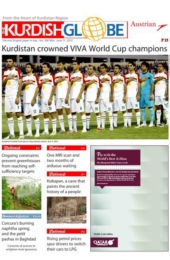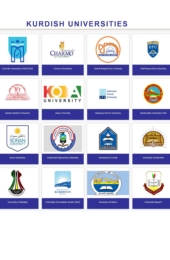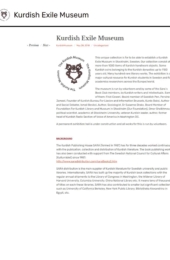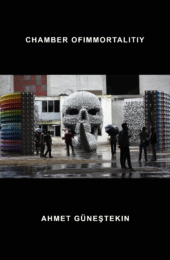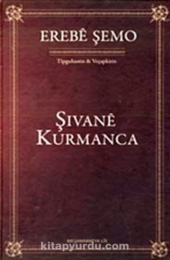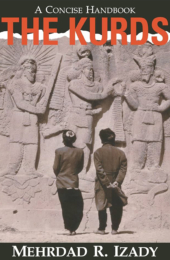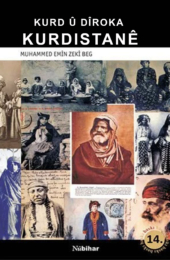VIVA WORLD CUP Shampionship in 2012 Kürdistan
The 2012 VIVA World Cup, the fifth and final edition, was an international football tournament for non-FIFA-affiliated teams, held in Kurdistan Region. The tournament was organized by the Non-FIFA Board, featuring teams not eligible for FIFA competitions. Kurdistan emerged as the champions of the 2012 edition[1][3][5]. This victory fueled hopes for nationhood among the Iraqi Kurds[5]. For detailed results, fixtures, tables, and stats of the 2012 VIVA World Cup in Kurdistan, refer to the Global Sports Archive[4].
Kurdish Universities
- University of Duhok, Duhok
- Duhok Polytechnic University, Duhok
- Erbil Polytechnic University, Erbil
- Hawler Medical University, Erbil
- University of Koya, Koya
- Charmo University, Chamchamal
- University of Raparin, Ranya
- University of Salahaddin, Erbil
- Soran University, Soran
- University of Sulaimani, Suliemani
- Sulaimani Polytechnic University SPU, Sulaimani
- University of Zakho, Zakho
- University of Halabja, Halabja
- University of Garmian, Kalar
- University of Kurdistan Hewlêr, Erbil
Private universities
- American University of Iraq, Sulaimani, Sulaimani
- Catholic University in erbil, Erbil
- Qaiwan International University - UTM Franchise, Sulaimani
- Kurdistan Technical Institute, Sulaimani
- Komar University of Science and Technology, Sulaimani
- American University Duhok Kurdistan, Duhok
- Cihan University, Erbil
- Dijlah College, Erbil
- Ishik University, Erbil
- Ishik University, Sulaimani
- Cihan University, Sulaimani
- Lebanese French University, Erbil
British Royal University for Science and Technology, Erbil — the Ministry of Higher Education is disputing its name, and so degrees as of April 16, 2011, were illegal according to Ministry of High Education until the issue is resolved.
- زانکۆی ئەربیل / International University of Erbil, Newroz road (double side facing Erbil West Hospital), Erbil
- University of Human Development, Sulaimani
- Nawroz University, Dohuk
- Knowledge University, Erbil
Kurdish Exile Museum
The Kurdish Exile Museum is an institution with a unique collection and a permanent exhibition hall. The museum is currently undergoing the rebuilding of its location to house Kurdish cultural-historical objects. This process may take some time [1].
In June 2023, Dr. Ismail Besikci reflected on the Stockholm Kurdish Exile Museum, shedding light on its significance and contributions [2].
The museum aims to preserve and showcase Kurdish culture, featuring a collection of over 1000 items of Kurdish handiworks, including coins belonging to Kurdish dynasties dating back up to 1100 years [3].
For further exploration of Kurdish history and culture, The Kurdistan Memory Programme documents the Kurdish story, creating a permanent national archive [5]. Additionally, the Kurdish Museum, Library, and Archive, with a presence on Facebook, serves as a platform for promoting Kurdish culture [6].
Chamber of Immortalitiy
- Overview: "Chamber of Immortality" is an exhibition by Ahmet Güneştekin, showcased in the 13th edition of Contemporary Istanbul. The accompanying book delves into the immersive experience, featuring an introductory text[1].
- Artistic Elements: Güneştekin employs thousands of metal human skulls and spiky animal horns to retell ancient stories, creating a unique visual narrative[6]. The artwork explores the concept of immortality, drawing on symbolism like snakes, considered sacred for their immortality[3].
- Exhibition Context: The artist's recent paintings, including "Momentum of Memory" and "Encounter," contribute to the thematic exploration within the exhibition[2].
- Social Media Presence: Ahmet Güneştekin shared details on Instagram, showcasing the "Chamber of Immortality" at Göbeklitepe, emphasizing the significance of the space[4].
- Visual Insight: A video titled "Ölümsüzlük Odası (Chamber of Immortality)" on YouTube offers a visual glimpse into the immersive art experience[5].
In summary, "Chamber of Immortality" by Ahmet Güneştekin is a visually compelling exhibition exploring themes of immortality through diverse artistic elements and narrative symbolism. The artist's use of unconventional materials adds depth to the storytelling, making it a captivating and thought-provoking experience.
Dayîka Nîştiman
"Dayîka Nîştiman" is a Kurdish theatrical play titled "Şanoya Dayîka Nîştiman û Koşka Miradan" written by Muhsîn Özdemîr. The play, considered one of the early works in Kurdish theater, revolves around the story of a mother, Dayîka Nîştiman, and the struggles of her three children in the town of Mahabad during 1946. The play is significant for its portrayal of the challenges faced by the characters in the historical context of Mahabad.
- The play is available for purchase, and more details can be found here (Source: #1).
- Additional information about the play and its historical context can be explored on eksisozluk1923.com (Source: #2).
- The theatrical piece is acknowledged as part of the early Kurdish theater scene, with historical significance in Mahabad (Source: #3 and #8).
For a deeper understanding, one can explore the themes and historical context of the play through the available sources.
After the Reza Shah regime left power in Mehabad after September 1941, an intellectual movement developed in the Mukriyan region, especially in Mehabad.
- Establishment of "Komelley Jiyanawey Kurd" (Kurdish Awakening Association) 16.09.1942,
- Formation of the Kurdish Lawan organization,
-Existence of literary spaces and associations,
- The publication of "Niştiman" magazine in May 1943 are some of these developments.
The Dance of Aliand Zin
The Dance of Ali and Zin
A time for Drunken Horses
A Time for Drunken Horses :
- Film Details:
- Synopsis:
- Reception:
- Visuals:
- Availability:
In summary, A Time for Drunken Horses is a critically acclaimed Kurdish drama offering a poignant portrayal of life's challenges in the region. It received recognition for its passionate storytelling and has visual content available online.
Şakiro
Şakiro
Şakir Deniz also known as Şakiro (born in 1936 in Eleşkirt–1996, Izmir, Turkey), was a Kurdish Dengbêj singer. His songs were often recorded on cassettes and distributed illegally, when the Kurdish language faced limitations in cultural expression in Turkey. He is one of the most prominent figures for Dengbêj in recent times. His and the recordings of other Dengbêjs such as Karapete Xaco are considered a resource for the ones who also want to become Denbêj singers. He once met such an apprentice and foresaw that he will be seen as a Dengbej who sings in the Şakiro style.
The family of Şakiro, who were from the Zilan tribe, lived in the village of Qerqa near Mount Aragats in Armenia before fleeing to the village of Kela Topraqqalê in present-day Eleşkirt district of Turkey, due to the conflict between the Russian and Ottoman empires.
Şakiro was born officially in 1936 (however it is also possible that he was born in 1931) while he spent most of his youth in nearby Cemalverdî village where he was exposed to Dengbêj songs from an early age.
Hawar
Hawar (meaning The Cry in English) was a Kurdish literature magazine, which was published in Damascus between 1932 and 1943.[1] The magazine was first issued by Celadet Alî Bedirxan[1] on 15 May 1932. The magazine was the first Kurdish literary magazine in Syria[2] and it was intended to publish it on a monthly basis,[2] but its publication was interrupted several times. The first 23 issues were published between 15 May 1932 and the 27 September 1935.[3] The issues number 24 - 26 appeared between 1 April 1934 and 18 August 1935.[3] The remainder was published between April 1941 and August 1943,[3] and the French, who governed Syria and Lebanon at the time, supported its publication.[4] The 57th and last issue was released on 15 August 1943.[5] The first 23 issues of the magazine were published in both the Latin and the Arabic alphabets, but from the 24th issue onward, only the Latin alphabet was used.[3] The Kurdish alphabet, which was formulated by the publisher Celadet Alî Bedirxan and also referred to as Hawar alphabet or the Bedirxan alphabet, was used to publish Hawar.[6] The texts which were published emphasized the value of the Kurdish folklore for developing the Kurdish language and personal qualities.[7] Hawar had its most subscribers in Syria and Iraq, but also Lebanon, Iran. Some educational institutions and libraries in Europe and the Middle East also subscribed to the Hawar magazine.[8] Since 2006, the 15 May, the date of the first publication of Hawar in 1932, is celebrated as the Kurdish language day.[9][10]
Celadet Alî Bedirxan said of his purpose for the magazine: "Hawar is the voice of knowledge. Knowledge leads to personal reflection. A person who becomes aware of the inner-self desires freedom and happiness. Self-knowledge also leads to self-expression. This magazine will reflect those expressions in the Kurdish language".[2]
Şivanê Kurmanca
Şivanê Kurmanca Erebê Şemo is the title of the first Kurdish novel written by Arab Shamilov, also known as Erebê Şemo, a prominent Yazidi Kurdish novelist and scholar who lived in the Soviet Union. The novel was written in Kurdish and published after 74 years, using the Celadet Elî Bedirxan alphabet. Erebê Şemo played a significant role in modern Kurdish literature, and his work marked a milestone in the development of contemporary Kurdish literature.
Stars: Erebê Şemo
Kurds: A concise handbook
- M. Emîn Zekî Beg and Kurdish Boundaries (1931): M. Emîn Zekî Beg, an Iraqi Kurdish statesman, played a crucial role in delineating Kurdish boundaries while serving as the Minister of the Economy in the first Nuri as-Said government. This historical moment is outlined in the context of Kurdish history in Iraq[1].
- Şeref Xan's Sharafnama (Late 16th Century): The Sharafnama, authored by Şeref Xan, provides a critical analysis of Kurdish ethno-politics during the late sixteenth century. This historical text contributes to our understanding of the early modern world and the legacy of Kurdish history[4].
- Modern Kurdish Poetry (20th Century): The emergence of modern Kurdish poetry is a significant milestone in Kurdish literature, responding to the advent of modernity and nationalism in Kurdish society[5][6].
These key points highlight pivotal moments and figures in the history of the Kurds, offering insights into their socio-political and cultural evolution.
Stars: Mehrdad Izady
Kurd û Dîroka Kurdistanê
Mehmed Emin Zeki Beg (1880-1948) was born in Süleymaniye, Ottoman Empire, and his father was Hacı Abdurrahman, engaged in tobacco trade. He excelled academically during his education [2]. As an Ottoman military officer, he played a significant role in Kurdish history and diplomacy. Zeki Beg's life is documented in "Kürtler ve Kürdistan Tarihi" (Kurds and Kurdistan History) [1][4]. His story reflects the complexities of the Kurdish experience during the early 20th century, combining military service and diplomatic contributions [3][5].
Stars: M. Emîn Zekî Beg
